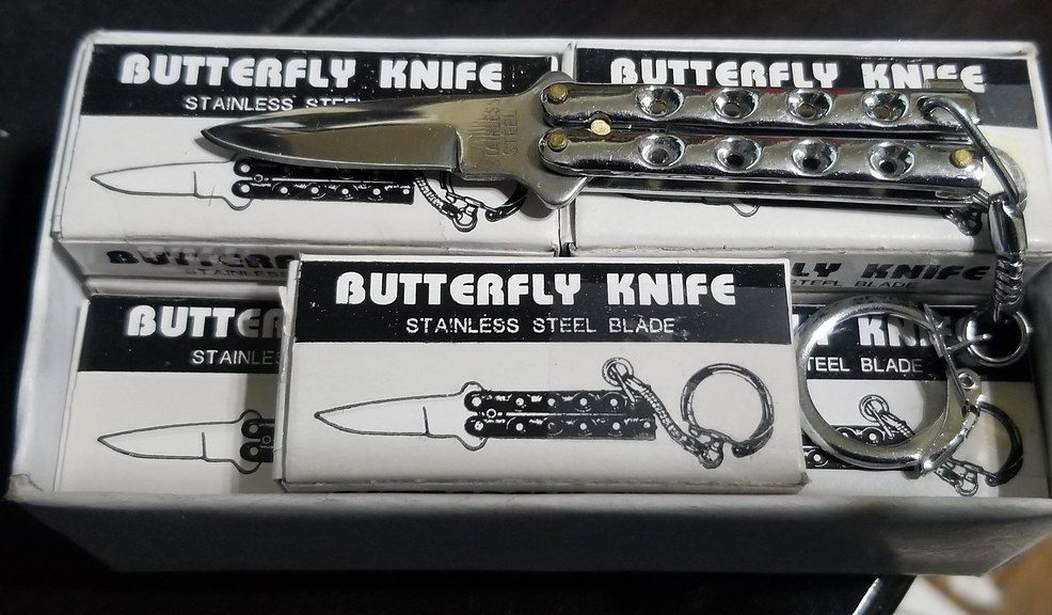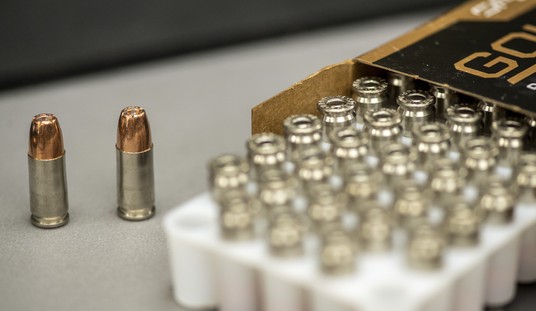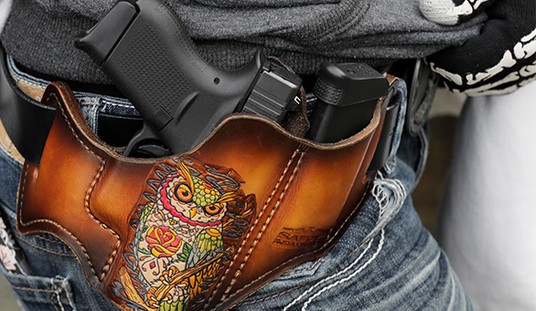On Valentine’s day 2023 we didn’t have just regular expressions of love. Not at all. The 14th was a big day for attorney Alan Beck, with him showing his love for the Second Amendment during oral arguments in a case known as Teter v. Lopez (formerly Teter v. Shikada and Andrew Teter, et al v. Clare Connors, et al). Teter is a challenge to Hawaii’s complete prohibition on the possession and ownership of butterfly knives.
The case is on appeal with the plaintiffs seeking the overturn of the lower court’s opinion. Litigating on behalf of Attorney General Lopez was Robert T. Nakatsuji, First Deputy Solicitor General of Hawaii. The arguments were heard before a three judge panel of the Ninth Circuit Court of Appeals consisting of Justices: Carlos T. Bea, Daniel Paul Collins, and Kenneth Kiyul Lee. As for the makeup of the panel, Bea is a Bush appointee, and Collins and Lee both Trump appointees.
Beck, argued for the plaintiffs and made short order of the state’s former arguments. In his opening remarks he divided up his arguments into three points. One, butterfly knives, like all knives, are protected arms. Two, there’s no historical basis for banning butterfly knives. Three, the analogues the state used are inappropriate, as Heller states that the Second Amendment applies prima facie to all bearable arms.
Looking at these arms strictly through Heller, arguments not utilizing NYSRPA v. Bruen do hold water. During examination, Judge Collins queried about the approximate number of such knives that were or are in private hands. Beck referenced an amicus brief from Knife Rights. The brief states that during a five year period in the 1980’s, several hundred thousand were sold to citizens. Judge Lee asked about the “dangerous and unusual” classification of arms, to which Beck noted the arm can’t be unusual if it’s borne for lawful purpose.
Beck continued with pointing out that the state has been, and further is, unable to provide an actual analogue where such arms would be completely prohibited. The matter of bowie knives being banned during certain instances of concealed carry was brought up, however it’s important to note that there was no blanket restriction on an entire class of bladed weapon at the time of our founding. To that restriction, we can attribute to the NYSRPA v. Bruen “time, place, and manner” restrictions, such as not allowing firearms in Times Square on New Year’s Eve, versus at all times.
First Deputy Solicitor General Nakatsuji had his work cut out for him. Listening to him argue was similar to listening to Barbara D. Underwood, the Solicitor General of New York when arguing in NYSRPA v. Bruen. Both Nakatsuji and Underwood gave arguments in their respective cases which were akin to a highschool aged teen giving a presentation that they clearly did not prepare for. Restatement of the same old and tired arguments is what one would be delighted with when tuning in to a rewind, as well as circular references.
Nakatsuji did at first ask the panel to remand the case so that proper historical analogues may be presented and argued. The judges did not seem willing to grant that request.
Judge Bea inquired, “I’m having trouble following you. What facts, as opposed to legal research into other laws do you propose could be developed by a remand?” In an attempt to answer, Nakatsuji started his argument, “Well, Your Honor, I think the historical facts, I think could be just historical facts. Your Honor, I think we could obtain analyses from expert…,” and was then cut off by Bea. “Historical facts are part of the legal analysis right? Under Buren. And those were available to you before,” retorted Judge Bea.
The back and forth continued, with Nakatsuji thinking somehow the history changed in the time period between Heller and NYSRPA v. Bruen. Bea did put the matter to bed when referencing NYSRPA:
It [Bruen] says “look at the history,” right? But maybe you can tell me what impediments that there were to you doing the research as to historical analogues in the law which prohibited the use of butterfly knives that you now have overcome, so that you can go back and do some further historical research. That’s what I’m having trouble with.
The historical analogues and text, history and tradition that Nakatsuji came up with were laughable.
The state argued butterfly knives are used by criminals with criminal intent, thus they are “dangerous and unusual.” The judges were not having that, pointing out that handguns are regularly, if not the favored weapon used to terrorize the people with, and even still they are protected under the Second Amendment. When trying to discuss the difference between handguns and knives, Nakatsuji gave Second Amendment supporters a complete golden egg that everyone needs to jot down:
And I think there’s a fundamental difference between a weapon like a handgun, which ordinary people do need to have access to, you know, it makes sense to have some form of public carry if ordinary people are going to be using them. But if you’re talking about a weapon that’s associated…very closely associated with criminals and criminal activity, the idea is to get the arsenal out of the hands of the criminal. So that’s why you need a more restrictive ban on these kinds of weapons and butterfly knives fall into that second category. [emphasis added]
The other analoge regarded bringing up bowie knives again. The narrow prohibition on bowie knife possession when concealed, the state tried to argue, is analogous to a complete ban on butterfly knives. On what grounds?
… butterfly knives, they’re simply the latest form of this kind of problem. And, you know, they they became a problem in the 1990s. And they are now part of this tradition, which is to restrict weapons that are popular among criminals and used for criminal activity.
In short, he stated that some youth gang members possessed butterfly knives in the 90’s, they became a problem, and that’s the history, text, and tradition he’s quoting.
The formerly referenced amicus brief, on page 25, by Knife Rights cuts up the state’s paranoia on these weapons.
However, as stated above, the testimony offered in the legislative history fails to show that butterfly knives are used in crimes. The testimony offered by the Honolulu Police Department does not provide any evidence of criminal misuse of butterfly knives. It merely states that prior to the ban on butterfly knives, these knives were commonly found on individuals. ER083-ER087. Moreover, the record is entirely devoid of any showing that butterfly knives have ever been used in a crime. Thus, Appellees have failed to make any showing that butterfly knives were or are associated with criminal or gang activity.
In Beck’s final rebuttals, he points something out that should embarrass Nakatsuji:
…there wasn’t actually any evidence of anyone committing crimes. What was happening is that the local high school students would be caught with them, not because they’re engaged in some type of crime, but for simply completely unassociated “X.” And they just happen to have those on their person. That doesn’t mean that because they had…let’s say because we said they have wallets on them and keychains, that doesn’t mean that wallets and keychains are associated with crime. So they actually produced absolutely no evidence that butterfly knives are actually engaged or used for crime at all.
Beck is a masterful litigator. I reached out to him about the arguments and congratulated him on what seemed like a job very well done. I asked him about the case and he said of the conflict, “Heller is clear that the government cannot prohibit the mere possession of a protected arm and Hawaii was unable to point to any historical tradition of prohibiting knives. Thus, I am confident that we will prevail.”
What will come of the case and what the three judge panel will decide is up in the air. Looking at the questions the judges asked, one might find them to be leading towards a reversal of the lower court’s opinion. We don’t know.
If the panel finds for the plaintiffs, is Hawaii going to ask for an en banc hearing? Will the case continue to get appealed? Could the citizens of the Aloha State finally be liberated from the complete prohibition on these bearable arms? What can be said for sure is that we’ll be following the progress of this case and others, giving updates as they arise. On the fly, this does seem very cut and dry.
Want to tune into the arguments on rewind? They can be viewed HERE or in the embed below.







Join the conversation as a VIP Member